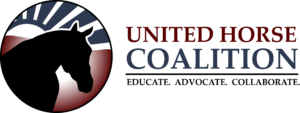When horses need help: Who to call, and when.
By United Horse Coalition
This article is part 2 of a series. Click the link below to read part 1.
When reporting concerns about a horse’s welfare, there are several key authorities you can reach out to, depending on the situation:
ACO (Animal Control Officer)
Your local ACO is often the first point of contact for animal welfare cases. They have the authority to investigate complaints, assess the condition of the horse, and take action if necessary, including issuing warnings or seizing animals in severe cases.
When to call: An ACO is typically responsible for animal welfare and the enforcement of animal cruelty laws. If you suspect that a horse is being neglected, abused, or is in distress due to improper care, you should contact your local ACO.
Your ACO is also a great resource – perhaps the horse owner just needs some help, guidance, or assistance; the ACO would be able to help direct them to better care for their equine.
Examples of situations where it would be best to contact the ACO:
- Horses without adequate food, water, or shelter.
- Horses being mistreated or handled inappropriately.
- In cases of hoarding or overpopulation of horses.
- Injured or sick horses in need of immediate attention but no apparent owners or ongoing care.
- In the case of a stray horse, or horse(s) at-large (loose).
State Veterinarian
If neglect involves potential violations of state animal welfare laws, the State Veterinarian’s office may be involved. They oversee livestock health and welfare regulations and can provide expertise on whether a horse’s condition meets legal intervention thresholds.
When to call: A state veterinarian focuses on the health, safety, and welfare of animals at the state level, often concerning diseases or issues that could affect livestock or public health.
Examples of situations where you should contact the State Veterinarian:
- Outbreaks of contagious or reportable diseases (like equine influenza or EHV-1).
- If there are concerns about biosecurity – if a facility is housing sick horses in unsafe conditions where the disease could spread to other animals, this could warrant state intervention.
- Any concerns about the public health risks posed by a horse, especially if there are reports of zoonotic diseases (diseases that can transfer between animals and humans, such as Rabies or West Nile Virus).
- The situation involves large-scale neglect – if multiple horses are suffering in poor conditions, the State Vet may be involved in evaluating the herd’s welfare and coordinating care with law enforcement or rescues.
Board of Health
In some cases, a neglected horse may also be living in unsanitary conditions that pose a public health risk. The local Board of Health can step in when concerns involve improper waste management, hazardous environments, or public safety issues related to animal care. These issues can include disease outbreaks that could affect humans, the environment, or communities.
When to call: If your concern about a horse may pose a public health risk or relates to environmental health, you should reach out to the Board of Health.
Examples of situations:
- If a horse has been exposed to or is suspected of carrying a disease that can affect humans (such as rabies).
- Concerns about horses living in unhealthy conditions that may affect the broader community (such as manure accumulation or water contamination).
- Issues of insect control (such as flies that are potentially carrying diseases from the horse).
In summary, here are some good guidelines to follow if you have concerns:
| Situation | Contact |
| No food, water, or shelter; visible suffering | Animal Control Officer (ACO) |
| Ongoing cruelty or neglect investigations | Humane Officer/ACO |
| Disease outbreaks or herd-wide issues | State Veterinarian |
| Manure, water contamination, health risk | Board of Health |
| Owner needs help, horse needs rehoming | Local Equine Rescue or Sanctuary |
Understanding the Henneke Body Condition Score (BCS)
Created by Dr. Don Henneke and validated by the AAEP, this system assigns a score from 1 (poor/emaciated) to 9 (obese) based on fat coverage in six key areas: ribs, withers, loin, tailhead, neck, and shoulders.
| Score | Condition |
| 1 | Poor – Emaciated, no fat cover, bones clearly visible |
| 2 | Very thin – Slight fat over bones |
| 3 | Thin – Noticeable ribs, minimal fat |
| 4–6 | Ideal – Balanced fat coverage, healthy |
| 7 | Fleshy – Slight excess fat over ribs and tailhead |
| 8–9 | Fat to Obese – Thick fat deposits, ribs hard to feel |
Horses scoring 1–2 or 8–9 may need veterinary attention.
More on BCS: AAEP BCS Chart
Photo credit: American Association of Equine Practitioners
The United Horse Coalition provides a database of over 1,200 local rescues and sanctuaries that provide Law Enforcement Services, owner safety net services, and owner rehoming options. For more information please visit: www.unitedhorsecoalition.org.
Helpful and Reputable Resources
- United Horse Coalition – Support and education for horse owners
- AAEP – American Association of Equine Practitioners – Veterinary care guidelines
- AAEP – American Association of Equine Practitioners – Equine Neglect and Abuse Resources
- AVMA – American Veterinary Medical Association – Animal welfare principles
- ASPCA – Equine Welfare
- NACA – National Animal Control Association
- CDC – Zoonotic Diseases from Horses
- UC Davis Center for Equine Health
Thank you for speaking up for horses. Understanding what real neglect looks like—and when to act—is essential in protecting equines and supporting those who care for them. If you’re ever unsure, don’t hesitate to ask questions, gather facts, and connect with equine professionals or rescues in your community. Together, we can make a difference.
All Educational Resources:
Let’s face it – we may all need a little help at one point or another.
It’s never too early to understand what assistance services are local to you.
Check out UHC’s Equine Resource Database today.
















